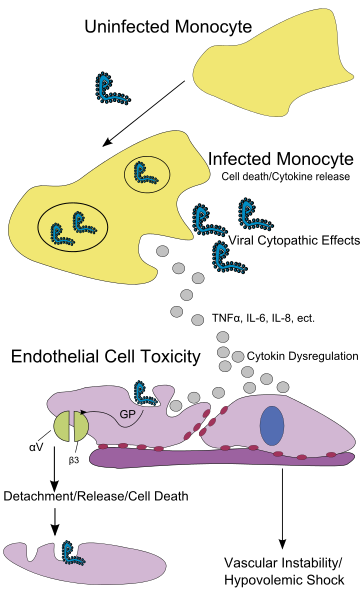Interesting ways to defy death
In its thousands faces, evolution has granted some creatures the ability to perform deadly actions while defying death in ingenious ways. There are such interesting cases that people even decided to base their career studying them. This was the case of Veronica Saraiva Failho also known as “the girl of the dead pigs”, soon you will understand why. During her youth she frequently went for walks in the Brazilian forests with her grandfather and the sight of dead animals was common. However, despite the horrible smell and the macabre sight, Veronica always found a reason for excitement in these encounters. She was fascinated by how much life was originating from a single death. There were often dung beetles feasting on these carcasses (yes, they don’t all feed on feces, some of them find dead carcasses tastier). Right away Veronica noticed how different species of beetle had a predictably different behavior and today she is studying the reasons behind it.

Image CCO Creative Commons Source

Image CCO Creative Commons Source
In her PhD, Veronica studied the infection risk of insets that ingest rotting meat and today she is studying the behavior of dung beetles that feast on rotting meat. To conduct her research, she has to feed rotten meat to these beetles and to study them in their environment she decided to conduct her research in a forest, from here her nickname “the girl of the dead pigs”. In her research, she is trying to understand how can beetles eat rotten meat without getting infected. It turns out, it’s because of their nesting behavior. From tests of soil samples collected around carcasses on different days, it was found that the infectivity of the soil was highest around day 7 and that the infectivity decreases exponentially going deep into the soil rather than moving away horizontally from the carcass. That explains why several beetles dig their nests in tunnels beneath the carcass. They bite off small chunks of rotten meat and then they bring them below ground in their nests to feed their progeny. This an example of how instinct and certain behaviors are not left to chance, but they could provide survival advantages.

Image in the public domain - Source

Image in the public domain - Source
Now I wanted to give you another example of survival and once again it’s an example of resistance to infections. I am talking about bats. Maybe it’s because of their nocturnal activities or because of their “not-so-pretty” faces but bats have always been associated with danger and death. Superstition aside, there are some risks in living in close proximity to bats. In fact, they can carry and transmit some of the deadliest viruses like Rabies, Ebola or the SARS-associated coronavirus to name a few. Now the question is, how can bats carry these deadly pathogens without getting sick?
As for many things in science, there may be a few explanations and scientists have made a few hypotheses.
 Image CCO Creative Commons [Source](https://pixabay.com/en/flying-foxes-bat-tropical-bat-2237209/)
Image CCO Creative Commons [Source](https://pixabay.com/en/flying-foxes-bat-tropical-bat-2237209/)Originally, the most popular explanations were that bats can resist infection because they can produce large amounts of naïve antibodies. Another possibility is the increase in temperature that occurs in bats during flight. In fact, most bats can reach 40°C while they fly, this temperature is not suitable for the survival of many pathogens. However, we recently discovered another feature of bats that is likely responsible for their tolerance to viruses. It all started with a genomic study that highlighted highly conserved mutations in the DNA of different species of bats. These mutations were concentrated in genes responsible for DNA damage checkpoints and also in genes regulators of innate immunity.
Eventually scientists pinned down the likely protein responsible for the high tolerance of infections, the name of the protein is STING (stimulator of interferon genes). In every other mammal, STING is a protein that detects abnormal presence of DNA in the cytoplasm of cells (which is generally due to the presence of viruses) and as a response it alerts the immune system against the infection by triggering the production of interferon. In bats, however, there is a mutation in the gene that encodes for STING, as a consequence, the protein has a slightly different activity. The bat’s STING protein in fact activates only a milder interferon response, thus preventing the bat’s immune system to go in “overdrive” mode during viral infections. One of the reasons viruses are so deadly to us is because of the storm of interferon production that they cause, overwhelming our immune system. Being tuned to generate only a mild response, the STING protein in bats prevents this from happening.

Image in the public domain - Source
Still, why bats are so likely to carry viruses? Probably it’s because they live in communities of hundreds of other bats, thus facilitating the spreading of viruses. Also, the fact that bats do not get sick from carrying a virus means that they are likely to contributing to its spreading for longer periods of time. Unfortunately for us, the high temperature of bats is not sufficient to kill all the viruses, it actually could select “super-viruses” capable of surviving to high temperatures, much higher than what a feverish person could reach. This could make the viruses carried by bats even deadlier.
References
https://www.livescience.com/26898-bats-host-human-infecting-viruses.html
http://science.sciencemag.org/content/339/6118/456
https://www.cell.com/cell-host-microbe/fulltext/S1931-3128(18)30041-6
Communities that support me are:

enlarge
Attribution-ShareAlike CC BY-SA
Reuse this image by copying and pasting this text with it:
Attribution-ShareAlike CC BY-SA by @elvisxx71 thanks to @aboutcoolscience and @davinci.art

IMMAGINE CC0 CREATIVE COMMONS, si ringrazia @mrazura per il logo ITASTEM. Click here and vote for @davinci.witness
Complimenti, un post con informazioni non scontate e originali! Letto tutto d'un fiato:)
Aloha,
This turned out to be a pretty cool science article. It started out a little macabre but ended up very interesting with the interferon storm and fever resistant virus possibility.
Thanks, I now follow you and look forward to your next article.
Thank you, I'm glad you liked it
Yes, I look forward to reading your other stuff.
I think about a million things in a day and yet I never thought of why dung beetles don't get infected by the feces/rotten flesh they eat. Nature is truly surprising in its act and yet there is a science behind it. It was particularly interesting to see know the infectivity rate if soil actually decreased going down and not as much when going side ways.
Lo stercorario in prima pagina ha subito attirato la mia attenzione!
Cool writing @aboutcoolscience I didn't know the story about Veronica Saraiva Failho and she surely had a curious mind since her childhood. Not many kids would found excitement being near rotten meat, but there are always things to observe and learn.
I wonder how many generations of beetles were necessary for them to adopt a behavior that could take advantage of that fact?
Luckily for us, people are attracted/fascinated by weird things otherwise we would not have so much progress in science
This post has been voted on by the steemstem curation team and voting trail.
There is more to SteemSTEM than just writing posts, check here for some more tips on being a community member. You can also join our discord here to get to know the rest of the community!
Hi @aboutcoolscience!
Your post was upvoted by utopian.io in cooperation with steemstem - supporting knowledge, innovation and technological advancement on the Steem Blockchain.
Contribute to Open Source with utopian.io
Learn how to contribute on our website and join the new open source economy.
Want to chat? Join the Utopian Community on Discord https://discord.gg/h52nFrV
what a productive piece of information.